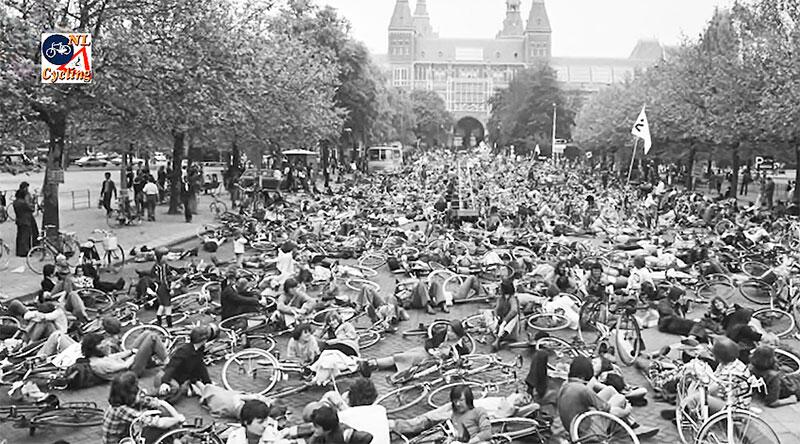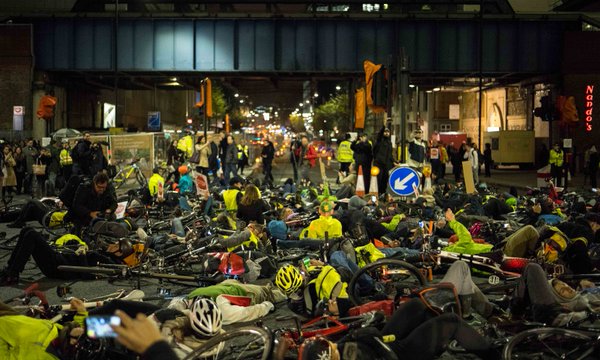Website contents
Home page
A protest campaign over poor walking and cycling safety
- Children are being harmed on Merseyside's roads: Who's responsible?
- Why a protest campaign is needed
- Civil disobedience and road safety: Q and A
Effective road safety planning: what should be happening
What the vision should be- A road safety vision
- Walking safely is a basic human right
- Declaration of every child's right to safe and healthy streets
- Decision making in a democracy: 7 Principles of Public Life
- Effective road safety planning
- What constitutes proper consultation
- Public bodies should avoid 'The patronising disposition of unaccountable power': the Hillsborough Report by the Right Reverend James Jones
- Merseyside road casualties - summary
- Merseyside road casualty maps
- Merseyside pedestrian casualties: the worst in Great Britain
- Merseyside child pedestrian casualties: the third worst in Great Britain
- Liverpool pedestrian casualties: the worst metropolitan borough
- Merseyside cyclist casualties: bottom third position
- Merseyside child cyclist casualties: the fifth worst in Great Britain
- Cyclist casualties: Liverpool is the worst metropolitan borough
- Motorcyclist casualties: Merseyside is the worst metropolitan area
- Motorcyclist casualties: The Wirral is the second worst metropolitan borough
- Car occupant casualties in Merseyside
- Total (all modes) road casualties: Merseyside is the worst metropolitan area
- Total (all modes) road casualties: Liverpool is the third worst metropolitan borough
- Pavement parking: Questions and answers
- Childhood obesity levels in Merseyside
- Deaths from air pollution in Merseyside
Options that should be considered
- Best practice options: policy documents
- Best practice options: Safe System approach to road safety
- Best practice options: 20mph speed limits
- Best practice options: 20mph speed limits: Pedestrian fatality risk and impact speed
- Best practice options: 20mph speed limits: Recommendations
- Best practice options: cycling infrastructure
- Best practice options: actions by police forces against illegal pavement parking
- Best practice options: regulated (permitted) pavement parking
Merseyside road safety failures
- Why children are suffering so much harm from the danger on Merseyside's roads
- Liverpool City Region Road Safety Strategy 2017-2020
- Liverpool City Region Local Journeys Strategy
- Liverpool Council never completed its Inquiry into poor road casualty figures
- Liverpool Council: Appalling cycling infrastructure
- Wirral Council road safety malpractice
- Wirral Council's failing road safety scrutiny committee
- Merseyside Police: failure of public engagement: a case history
- Improvements needed from Merseyside Police
- Why are road safety volunteers having so little effect?
Merseyside / national road safety failures
- How changes in the Highway Code caused the pavement parking confusion
- Why the Living Streets / Guide Dogs pavement parking campaign is inept and dangerous
- Flawed DfT "Consultation" on pavement parking
- Two child pedestrian deaths from pavement parking
- The 2018 Atkins/AECOM/Mayer 20mph Research Study was seriously flawed
Merseyside road safety concerns
So-Mo project on pedestrian casualties- So-Mo project outline
- So-mo project to reduce pedestrians killed or seriously injured on Liverpool's roads: Concerns and questions
- So-Mo meeting on 16th March 2018: Response by Liverpool Pedestrians Association
- So-Mo reports of May 2018: Response by Liverpool Pedestrians Association
Merseyside road safety improvements
- Merseyside Police and Crime Plan 2017 - 2021
- Merseyside Police leading the way in tackling pavement parking
Taking action on poor road safety
Current campaigns
- Voluntary groups
- Vision Zero Merseyside 2013
- Letter to Jane Kennedy and Steve Rotheram re LCR road safety strategy
- Letter to Jane Kennedy and Steve Rotheram: Replies from Jane Kennedy, Steve Rotheram and Sean Traynor
- Meeting notes: Merseyside Road Safety Partnership with Liverpool Pedestrians Association, 27 March 2018
Newsletters
- Newsletters: contents
- Newsletter - August 2018
- Newsletter - 16 December 2017
- Newsletter - 23 November 2017
- Newsletter - 2 November 2017
News
- PCC Scrutiny Group meeting 5 December 2017 - Provisional
- Highlights of the 9th 20mph conference in Birmingham, 8 March 2017
- Merseyside Police Performance and Scrutiny Group meeting of 2 March 2017
About
Contact
Non-violent direct action
When there is poor practice or malpractice by decision-makers, e.g. - decisions are not based on evidence
- there is no genuine engagement or consultation
- human rights are not being respected
- information is being withheld, or false information is being given out
Examples of direct action being used to fight for transport justice
1. How the Dutch got their cycle paths
 A mass die-in outside the Amsterdamís Rijksmuseum in the 70's:
A mass die-in outside the Amsterdamís Rijksmuseum in the 70's:
See the full video at https://www.youtube.com/watch?v=XuBdf9jYj7o explaining how the excellent Dutch cycle network was won by confronting the decision-makers who were prioritising car travel over child safety.
 A mass die-in outside the Amsterdamís Rijksmuseum in the 70's:
A mass die-in outside the Amsterdamís Rijksmuseum in the 70's: See the full video at https://www.youtube.com/watch?v=XuBdf9jYj7o explaining how the excellent Dutch cycle network was won by confronting the decision-makers who were prioritising car travel over child safety.
2. Crossing protest

Mothers formed a human barrier to hold up traffic in Beckenham, Kent in protest against the removal of a pedestrian crossing used by school children.
3. #NoMoreCoffins demonstrations in London
 Regular "Die-ins" are held in London to fight for a fair share of road space for cyclists. The vigourous campaigning style has been credited with changing the culture of transport planning in London, with many segregated cycle tracks and cycle superhighways now being built.
Regular "Die-ins" are held in London to fight for a fair share of road space for cyclists. The vigourous campaigning style has been credited with changing the culture of transport planning in London, with many segregated cycle tracks and cycle superhighways now being built.See also the photo gallery of the King's Cross protests at https://www.theguardian.com/uk/gallery/2012/jan/10/bikes-alive-protest-kings-cross
4. Kinder Scout and other mass trespasses
 The north of England has a proud history of people fighting for access rights such as
The north of England has a proud history of people fighting for access rights such as - the Latrigg and other Keswick trespasses of 1887 [1]
- the Kinder Scout mass trespass in 1932 [2]
References
[1] Mass trespass on Latrigg recalled (2015) http://www.cwherald.com/a/archive/mass-trespass-on-latrigg-recalled.440708.html
[2] Kinder trespass: Spirit of Kinder http://kindertrespass.com
Last updated: 12 Jan 2020

